Peugeot e-Expert (2020 – 2024) Review
Peugeot e-Expert (2020 – 2024) At A Glance
While it might be the Ford Transit Custom that’s the standalone market leader in the medium panel van market in the UK, it’s Stellantis and its group of brands that has the biggest market share across Europe. The Peugeot e-Expert shares its platform with the Citroen e-Dispatch and Vauxhall Vivaro Electric – but how does the Peugeot e-Expert compare? Read our Peugeot e-Expert in-depth review to find out.
The Peugeot e-Expert is a fully electric van, which makes it ideal for urban deliveries and low-emission zones. It uses the same 145PS electric motor as its sister models, meaning it is happy carrying heavy loads, while a full charge will give it a WLTP-rated range of 143 or 196 miles depending on battery choice (there are two). It’s not ideal for long-distance work, but is class-competitive for a medium-sized electric van is suitable for urban delivery rounds, which is where the e-Expert comes into its own.
There are two battery options to choose from – 50kWh and 75kWh. The smaller of the two is used in Peugeot, Citroen, Fiat and Vauxhall cars and can manage 143 miles on the WLTP cycle. The more expensive LCV-oriented 75kWh option is a much better option if you have the budget and will cover 196 miles on a charge, based on the WLTP test criteria.
A longer-range model is expected in 2024, but for now it still offers a greater distance-per-charge than the Mercedes eVito, for example.
The e-Expert also uses regenerative braking technology to partly boost the battery, meaning that it’s often at its best on urban rounds where the quoted range is most attainable.
Three wheelbases are offered: compact, standard and long, but there’s no double cab option.
Driving the Peugeot e-Expert (2020 – 2024)
Practicality is very much core to the appeal of the Peugeot e-Expert, with three front seats, the passenger side being designed to fold down to create a work surface or writing table – a neat feature that will be appreciated by many tradespeople and offered as standard on the Asphalt model.
The Professional is more functionality based but it works well, with a fair allocation of specification. It rides on smart 16-inch steel wheels, but has optional twin sliding doors, a load-through flap in the bulkhead for longer items and driver aids including rear parking sensors, automatic lights and windscreen wipers, a seven-inch touchscreen and a DAB infotainment system that’s also compatible with Apple CarPlay and Android Auto.
The Asphalt gets alloys, body-coloured bumpers and mirrors, standard metallic paint, LED daytime running lights, front parking sensors and a 180-degree rear parking camera, along with a head-up display. It also gets improved safety features, including lane-departure warning and speed-limit recognition.
It’s a spacious and comfortable van upfront with great forward visibility, but rear vision isn’t the best – the mirrors aren’t as panoramic as they could be, and you find yourself relying on the reversing camera a bit too much when backing into parking spaces.
The dash is smartly laid-out and the controls straightforward and easy-to-read, while the driver’s seat is comfortable.
There are three drive modes, selectable via a switch next to the gear lever. To benefit from the maximum range you’ll need to drive in ‘Eco’ mode. In ‘Normal’ mode, the battery range will drop by about 10 per cent, but the van is notably more eager. ‘Power’ will reduce that range further but is useful for overtaking and joining fast roads via slip roads.
Charge it overnight and it will take a shade under eight hours for the smaller battery to replenish, but over 11 for the bigger one. Fast charging is available as an option, though, and uses an optional 11kW on-board charger, which drops the charging time of the bigger battery to seven hours with a compatible charger. 100kW DC rapid charging can get you an 80% charge in around 45 minutes but will cost more at source.
Overall, the Peugeot e-Expert is a very good electric van but do bear in mind that its sister models from the Stellantis Group are broadly identical other than a few specification anomalies, so you may want to buy on the basis of the price or the deal available rather than the brand itself.
Peugeot e-Expert (2020 – 2024) interior
As with most electric vans, the e-Expert concedes some payload to its diesel-powered brethren but is still rated to carry 1,000kg – the extra weight of the battery pack and motor compared with a diesel engine impacting its overall carrying capability.
That said, the 1,000kg payload will be more than enough for most electric van users, who will see the range significantly reduced by heavier loads. The load bay is easily accessible and flat as the battery lives under the floor, and there’s very little wheelarch intrusion.
There are twin side doors offered as an option and these can be configured as fully electric via the options list, which is helpful for loading in busy streets.
Two specifications are available: Professional and Asphalt. The former is the entry-level model and has black plastic bumpers and steel wheels, while the Asphalt is more targeted at owner-operators and SMEs and comes with a higher specification, alloy wheels and more tech. Only the Professional is offered in all three body lengths, with the Asphalt being standard length only.
Model History
November 2019
Peugeot unveils electric e-Expert panel van
Two levels of range (124 miles and 186 miles WLTP), will allow customers to select a vehicle which suits their daily driving needs with the majority of professionals commuting less than 186 miles a day
Users will be able to choose between two battery sizes:
50 kWh, for a range of 124 miles (WLTP),
75 kWh, for a range of 186 miles (WLTP).
The e-Expert shares identical loadspace volume to the internal combustion versions of the Expert van

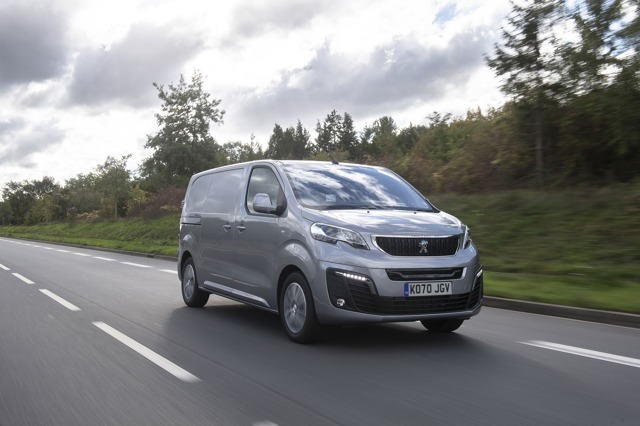

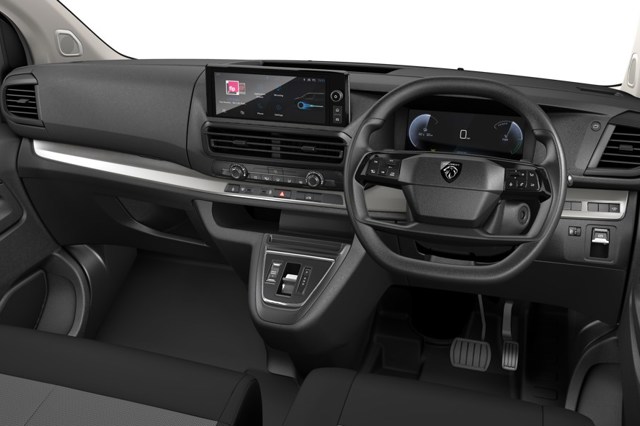
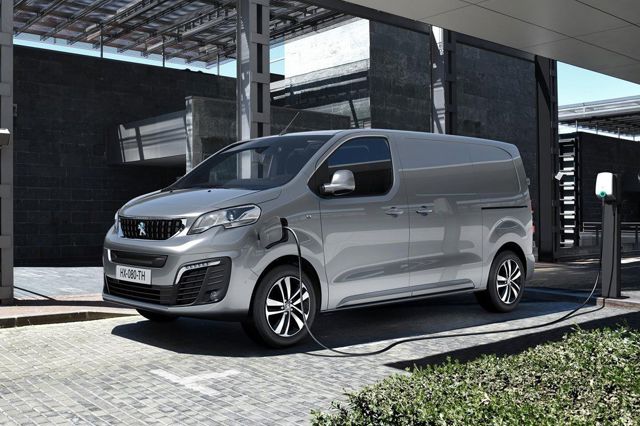
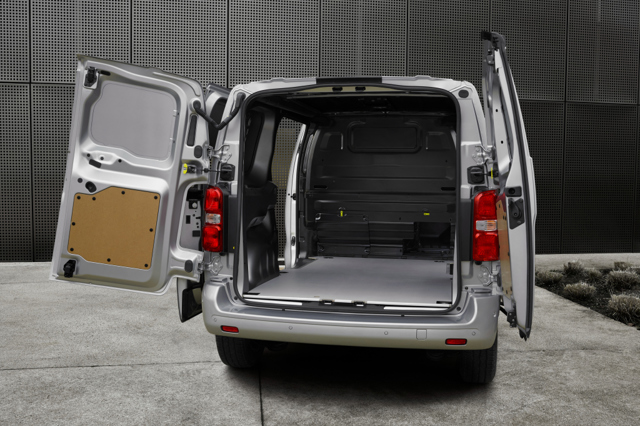
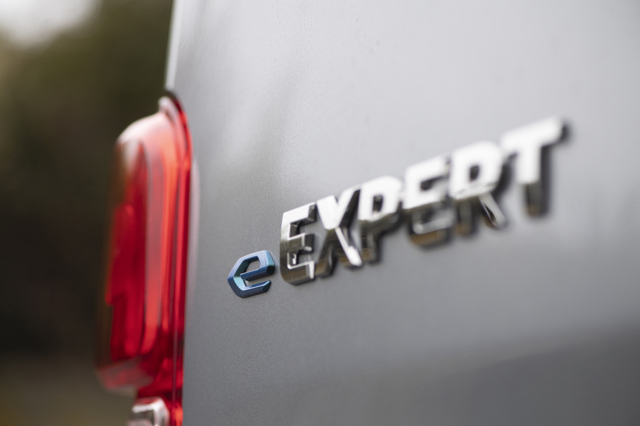
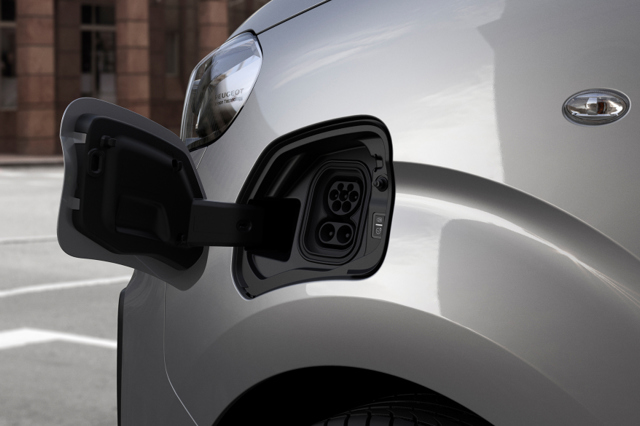
:no_upscale():format(webp)/https://cdn.uk.prod.group-mobility-trader.com/images/cas/c2fbb4723ad1aed8132ee71fcd79ce45/a8b19e3cd7d19916f1b8e05e6d2bca92.jpg)
 Zero tailpipe emissions, decent electric range, value for money, fast charge option
Zero tailpipe emissions, decent electric range, value for money, fast charge option
 Limited body styles, Rear visibility
Limited body styles, Rear visibility
:no_upscale():format(webp)/https://cdn.uk.prod.group-mobility-trader.com/images/cas/e1a428bcc589dc5acaa7761715d5def8/7b5ae3147e3faed0d1e0de03d41f1100.jpg)
:no_upscale():format(webp)/https://cdn.uk.prod.group-mobility-trader.com/images/cas/2b55c7b02d3d2fa2b6e0a0800166d5d6/e14c6e8f9aacdcebba59d28ace98229c.jpg)
:no_upscale():format(webp)/https://cdn.uk.prod.group-mobility-trader.com/images/cas/15eaba9f678eaaaf09359b91b6270890/c8fc7c11f495088b8d3f313a7bf990f0.jpg)